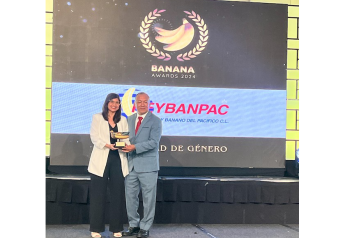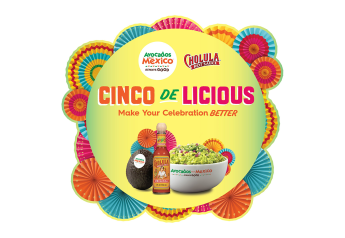Cottonmouth Farmer: The Insane Tale of a Buck-Wild Scheme to Corner the Snake Venom Market

When Ron Gollobin disappeared into snake hell and descended into the expansive tangle of a veritable cottonmouth nest on a four-month hunt, he undertook the most outrageous summer job ever performed by an American teen and unleashed one of the most hair-raising entrepreneurial efforts in pit viper history.
Working alone in remote ponds, 15-year-old Gollobin, with the prayers of a pagan and patience of a stone, caught and milked hundreds of 3’-5’ cottonmouths by hand, all in a chilling effort to obtain venom via a glory-and-riches scheme for the ages.
His cottonmouth account is an absolute jaw-dropper with few parallels—high adventure at its toe-curling best. Welcome to Gollobin’s addicting madness and a tale too insane for fiction: a cottonmouth farmer seeking a venom crop for harvest.
Taking Up Serpents
A son of Elizabeth City, N.C., a town perched on a bend of the Pasquotank River, young Gollobin spent the 1950s roaming forested wetlands at the edge of the Great Dismal Swamp—a 112,000-acre wonderland for a precocious, towheaded boy with a boat and a motor.
“It was swampy and I was a swamper,” Gollobin, 81, says, through words laced with a hearty chuckle. “I lived in town, but I had almost complete freedom. It was nonstop pursuit of frogs, lizards, turtles, and snakes—I was in my element.”
Into junior high school, Gollobin’s interest in amphibians and reptiles picked up steam with an intense fascination of snakes, under the tutelage of classmate and brother in arms, “John,” an amateur herpetologist with a research-oriented approach to all creatures cold and scaly. Under John’s influence, Gollobin crafted a snake laboratory in his attic, populated by dozens of specimens bobbing in alcohol-filled jars—essentially pickled snakes.

Gollobin was lord of his attic realm, able to pull up the ladder and disappear into a serpentine no-go zone, an upper room off-limits to his parents by their own choosing, except for a single overarching dictum—no live snakes allowed.
Gollobin’s reptilian education jumped from small, harmless snakes to deadly pit vipers. “I clearly remember the first time John showed me how to handle a poisonous snake—a cottonmouth. I grabbed the snake behind the neck, and it instantly wrapped its body around my arm and began squeezing as if it was a constrictor. Maybe I was hooked, because even though I was scared, I started to enjoy it.”
Beyond a science-based perspective, Gollobin also viewed snakes through a lens coated in greenbacks. In the summer of 1955, catching wind of a standing offer by the Ross Allen Reptile Institute in Silver Springs, Fla., to pay $1 per foot for live snakes and 5 cents a pop for lizards, Gollobin, 14, sold his bicycle and several more personal items, hoarded paper route income, and scrounged for loose change, convinced the seed money would spur a windfall of profit in central Florida.
Recruiting a 15-year-old friend, “Richard,” (an inauspicious companion choice due to Richard’s inordinate fear of reptiles) Gollobin, 14, hatched a Huck Finn-esque expedition to hunt reptiles in the Sunshine State. With a total kitty of just over $74, the duo of wannabe Tarzans hitchhiked out of Elizabeth City, on the road to fortune.
Considering his youth, feather-like weight under 100 lb., mop of blond hair, and complete disregard for safety, Gollobin was a prime target for predators of all stripes. “I was a spring chicken in the domain of wolves and anything could have happened to a boy my age and size. We were running away from home, intending to live in the Everglades and sell reptiles to Ross Allen,” he recalls. “What could go wrong?”
The Lizard King
Catching a chain of rides through the Carolinas and Georgia, Gollobin and Richard arrived in Marion County, Florida hemorrhaging dollars from the original $74 kitty—thanks to a $20 speeding ticket contribution on the Georgia line, several steak dinners, and an entire evening of bumper cars at Daytona Beach. No matter, a goldmine was surely around the corner.
They secured a 50-cent per night room at a shanty-like boarding house in Ocala, approximately 6 miles from Silver Springs, and hitched to the Ross Allen Reptile Institute. Spread over 10 acres, the facility was a mixture of entertainment and science, with activities ranging from alligator wresting to snake handling to invaluable anti-venin research. (Allen’s work was instrumental in providing venom protection for G.I.’s in World War ll.)

However, when the North Carolina teens waltzed through the facility’s doors, Ross Allen was nowhere to be found, gone on a genuine scientific expedition. However, his son, Tom Allen, took pity on the pair of waifs and gave them several days of free run to all rattlesnake handling and alligator wrestling on site, as well as venom milking.
Despite idyllic surroundings akin to a reptile Shangri-la, Gollobin and Richard soon were skinned of cash and food. “We’d been away from home for a whole week, and had been two days without food, living on nothing but our wits, which sure weren’t very sharp,” Gollobin says. “We were still waiting for the money to come rolling in.”
Low on options, the pair hit the woods, in adherence with their raison d'être in Florida: wrangling.
Gollobin snagged a pillowcase from the dismal room at the boarding house and set off into the bush, scouring the ground for any sign of snake presence, alongside a reluctant Richard. “I don’t know where in the hell all the snakes went,” Gollobin explains. “Maybe they were hunted out of that area, but all we found were lizards.”
Weary to the bone after a day spent chasing down 100 lizards in Florida’s summer steam, the boys collapsed with a palpable sense of relief in straw beneath a stretch of piney woods, envisioning the smorgasbord of food to come once the lizards were cashed in at the Reptile Institute for $5 (100 @ 5 cents).
Minutes into the rich, but brief rest, their dream of buffet-style food disappeared during a silent jailbreak. Richard left the pillowcase untied on the forest floor—allowing every lizard and each vital nickel to flee the scene.
Dusk and panic descending in tandem, Gollobin and Richard hunted in manic fashion, only capturing four more lizards before tromping out of the woods and back to the Reptile Institute to sell their meager catch for a mere 20 cents.
Walking toward the highway back to Ocala, dry-mouthed, thirsty and hungry, the boys stopped at a roadside orange juice stand fronted by a tempting sign: “All You Can Drink: 10 cents.” Slapping four nickels on the barrelhead, Gollobin and Richard tucked in with the parched desperation of castaways, each pounding an entire pitcher of freshly squeezed orange juice, much to the disgust and chagrin of the helpless business owner, hogtied by the guarantee painted on his sign.
Hydrated, but reeling from the sudden intake of sugar and fruit pulp on stomachs devoid of solid food for 48 hours, the boys staggered 20’ toward the blacktop, leaned in unison, and vomited massive, twin rivers of orange liquid painted against the golden hew of fading Florida sunlight.
Parting ways with Richard early the next morning, Gollobin abdicated the mantle of lizard king, thrust a thumb to the highway, and started the 750 mile stop-and-go journey back to Elizabeth City, accepting the inevitable draconian punishment for a “damn hellion” yet to be delivered by his father.
Days later, recovering his pride in the solace of the snake attic, Gollobin’s entrepreneurial drive was tempered, but only for the tiniest moment. Following his inglorious return to North Carolina, he chanced upon a newspaper article containing a clarion call for a reptile-obsessed young boy with a wild streak. A tiny snippet of text mentioned the high value of snake venom to anti-venin research facilities, upwards of $400 per ounce—a princely sum to 14-year-old Gollobin.
Exit stage right, the impulsive lizard hunter. Enter stage left, the visionary cottonmouth farmer.
“I kept everything on the quiet side,” Gollobin remembers. “Nobody was aware of what I was planning for that next summer. I knew that if scientists needed snake venom, there was no one more capable than me of getting hold of it in large amounts, because who else was crazy enough to go deep into the habitat of the truly big snakes? They were offering what was big, big money to a kid, more than I ever dreamed of, and I wasn’t about to watch the chance skip by.”
Gollobin pounced on a chance to corner a $400 per ounce market.
Cometh the hour, cometh the man.
Venom Candy
The economics and logistics of Gollobin’s venom harvest venture demanded a poisonous snake available in relatively high volume, i.e., a cottonmouth, the mainstay viper of the swampy southeastern United States, often dubbed a water moccasin, snap jaw, gaper, swamp lion, or a host of similar monikers.
Known for frequently holding its ground when disturbed, head up and mouth agape revealing white tissue within, a broad-headed mature cottonmouth is semiaquatic, typically black-gray in color with a mottled belly, a thick, muscular midsection, remarkably blunt tale, and length ranging up to 5’, but often reaching 6’ and slightly beyond. In short, the snake is an absolute hoss, and merited or not, in most unexpected, close encounters with humans a cottonmouth elicits the fear of God, or at a bare minimum—a punctuated stream of primal invective and cursing.
Gollobin’s cottonmouth honey hole was hidden roughly 50 miles east of Elizabeth City, tucked in a series of freshwater ponds on the Outer Banks—a chain of islands hugging the Carolina coast. Considering the fetid and wooly habitat around the water holes, freshwater ponds might be considered a misnomer—slough or bayou could also be accurate. The ponds were a hot zone for mosquitos, and Gollobin describes the small bodies of water as, “about 50’-60’ across, surrounded by vines, briars, poison ivy, spiders, lizards, chiggers, ticks, all filled with sticks and leafy debris.”
As the calendar rolled into the first weekend of June 1956, Gollobin suited up in jeans, a t-shirt, and army boots, and launched a cottonmouth harvesting enterprise. He walked out of his house in early morning sunlight and building heat, presumed by his parents to be en route to standard haunts within the Great Dismal Swamp or on the Pasquotank River.
Instead, in total secrecy, he carved a travel pattern repeated every single weekend day of the 1956 summer, weather permitting, June to early September. Carrying a sawed-off broomstick, and strapped with a backpack containing extra jeans, a burlap sack, venom collection paraphernalia, and a highly ineffectual snakebite kit providing a placebo of assurance, Gollobin darted down a few sleepy Elizabeth City side streets and emerged on the highway, thumb up, bound for a cottonmouth grand central station located 50 miles east.
“The ponds were just outside the town of Nag’s Head. It’s an area within the Intercoastal Waterway, full of sand dunes, and very near Kitty Hawk, where the Wright brothers first flew,” Gollobin describes. “I hitchhiked the whole way there, walked for a mile to the beach, and walked another mile through brush and woods to the ponds. Just me. Not another soul in the world knew what was going on, because I didn’t want to get in trouble, and I didn’t want anyone else to get the $400. No cell phone, no way to signal anyone, and nobody around. I was wiry, but I was still probably not much over 100 lb., and I was very much aware that if I got bit, the chances of me getting to a hospital alive were not good.”
Gollobin’s hunting technique began with entry into an algae-covered pond, wading approximately 5’-10’ off the bank into water reaching his upper thighs. Turning around, Gollobin skirted the base of the pond, easing along the perimeter, eyes out for cottonmouths coiled on the bank waiting for prey.
The physical act of snagging a cottonmouth was contingent on the mastery of broomstick handling and a heavy dose of touch-and-go madness. Gollobin’s self-fashioned broomstick featured a large clothesline hook on one end and a nylon-line slipknot at the opposing end. Gollobin’s No. 1 option to catch a cottonmouth, depending on terrain and bank foliage, was the slipknot, essentially a snare.
“I’d reach the broomstick out, drop the loop just past the head and yank up. Then I’d pin him down, remove the knot, and slip him in my burlap bag. If the snare couldn’t get him, I’d go in with the hook to pin him down.”
The typical size of cottonmouth candidates plucked from the banks ranged from 3’-4’, but Gollobin frequently encountered specimens upwards of 5’-6’. “There were always some thick, fat ones that you had to see to believe. Whenever I saw more than one at the same spot on the bank, I always picked the biggest to catch—whichever had the largest venom sacs.”
Snakes have an extremely poor sense of hearing, but an extraordinary ability to detect vibration, a characteristic that wreaked havoc with Gollobin’s nerves. “A cottonmouth will let you ease the nylon loop over its neck, but if you touch any surrounding stick or branch in the process, even under your feet in the water, they’ll explode off the bank and seek cover in the water,” Gollobin details.
“When I was standing in the pond and made a mistake, the cottonmouths wanted the safety of the water, and didn’t want to exit onto the land,” he continues. “When they would rocket off the bank and hit the water feet in front of me, I held my breath because they’d glide by and sometimes bump into my legs—a terrible feeling that scared the living hell out of me.”
At each pond, Gollobin operated with business-like efficiency, methodically moving down the banks until the burlap sack grew heavy, cognizant that subsequent venom milking required additional time and caution—heavyweight factors for a 15-year-old boy required to be home before dark.
Each day’s haul varied in precise number, but Gollobin normally stopped at 10-12 snakes, either because of time or the difficulty in wielding a bulging bag of cottonmouths. Once a hunting session was complete, he toted the bag to nearby dunes, and began milking venom.
“I took the snakes to the sand dunes, away from the water, so there was no splashing by one snake to scare the others. I estimate each snake took 5 to 10 minutes to milk, but it was really a matter of getting the gear ready. I was so cautious when handling the cottonmouths and never careless. I’d been bitten by countless water snakes, but never by a venomous snake. I was adolescent and bulletproof, but I knew there was no room for error. There was no competition, no crowd, not anyone but me, and the danger was titillating, but I knew just one miscalculation meant I wasn’t going home. Same risk every weekend.”

“I had my milking kit ready,” he adds. “In the kit, I had a tumbler, and I’d hold the snake just behind the head, and put his fangs over the tumbler, squeezing the venom sacs. The venom ran down into the glass. I’d stopper the sterile vial and move onto to the next snake. Then I’d let the snakes all go after milking and there is no doubt I caught and got venom from some of the same repeats that summer.”
Week after week of summer, as the milking numbers went from dozens to scores to hundreds, what did Gollobin do with the vials?
Back to the snake attic and a bit of alchemy with a razor blade, glass sheeting, and mason jar. Time to make venom candy.
Curing the Crop
Fifty cents bought Gollobin one plate of foot-square glass. Every weekend, after his return home before dark from Nag’s Head, he ascended into the attic, opened the vials, and poured the venomous hemotoxin over the glass plate—evenly spread in the manner of pancake batter. Glistening with a pale sheen, it appeared as if Gollobin poured a thin layer of yellow varnish atop the clear glass.
After air-drying for roughly seven days, Gollobin used a single-edge razor blade to scrape the hardened liquid into a tiny pile of crystallized residue. Even during the scraping process, he was on edge, aware his friend and budding herpetologist, John, had been poisoned during a similar process. A year earlier, while scraping dried and crystalized venom slivers with a razor blade, John’s thumb was pierced by a tiny shard of residue, resulting in hospitalization due to snakebite by proxy.
Intent on avoiding a repeat of John’s freak injury, Gollobin gingerly deposited each load of golden residue into a 16 oz. mason jar, sterilized by alcohol and boiling water. “I never weighed it, but I had a jar of what the research scientists wanted. I had purified venom,” Gollobin says, “at least from the vantage point of a 15-year-old.”
The cottonmouth season was over; it was time to sell a crop.
Teardrops in the Rain
September progressing, summer dying, and a heart bursting with expectation, Gollobin spun the circular disk of a rotary phone and dialed for the Ross Allen Reptile Institute.
After excruciating minutes of waiting, passed from one low-level handler to the next, Gollobin was finally patched through to the Reptile Institute’s research facility and a staff official in command of the anti-venin project.

Brimming with confidence, Gollobin blurted out his bottom line—an offer painstakingly crafted over four, death-defying months: “Sir, I have a mason jar of crystalized water moccasin venom and I’d like to sell it to you.”
The scientist responded with a single question, “Son, is it purified?”
“Yes sir, it’s purified,” Gollobin replied. “I milked the snakes. I put the venom in a sterilized vial. I air-dried the venom. I scraped it into a sterilized jar. What else would I need to purify it?
The phone line went silent with a pregnant pause. In a sense, Gollobin’s question answered itself. “You’d need a roomful of machines and people with advanced degrees to run those machines,” the scientist concluded. “I’m sorry, but the venom must be purified before it is dried."
With those words of rejection, the crash of the cottonmouth harvesting scheme was complete. The venom was worthless—teardrops in the rain.
The Great Lumber Hustle
Sixty-six years later, Gollobin is heartened by his audacity and teenage nerve. “I was always a risk-taker, always riding the edge, and catching cottonmouths taught me to remain calm in the rigidity of tense situations and was a good background for life in general.”
Gollobin was a middle-class kid with a foot on both sides of the tracks—a rare individual comfortable running with rednecks or the refined. “I was always a guy hovering between two worlds, and it served me well later in life.”

Indeed. Gollobin became an investigative reporter and a master in his field, receiving two nominations for the Pulitzer Prize, five Emmy Award wins, and 30 years tracking the mafia and corruption.
Six-plus decades past the 1956 summer of cottonmouth farming, does the lizard king and pit viper wrangler still reflect on his time in the dark ponds, thigh-deep in muck, wielding a slipknot and hook?
“I think about those days more and more,” Gollobin concludes. “It was a crazy time in a young boy’s life that I can only compare to Tom Sawyer or Huck Finn. I had a charmed life in many senses, and it was a lucky way to grow up.”
At 15, after the collapse of his cottonmouth venom proprietorship, was his maverick streak curbed?
“Hell no,” Gollobin adds. “Let me tell you about The Great Lumber Hustle.”
(Gollobin lives in a Boston suburb, working on a book of short stories and memoirs to be called, “Fraught and Frivolous.” For more detail on the escapades of Ron Gollobin in the 1950s, see narratively.com and The Teenage Prank That’s Lasted 60 Years, and The Great Cottonmouth-Catching-Get-Rich-Quick Scheme of 1956.)
To read more stories from Chris Bennett (cbennett@farmjournal.com — 662-592-1106), see:
Tractorcade: How an Epic Convoy and Legendary Farmer Army Shook Washington, D.C.
Bagging the Tomato King: The Insane Hunt for Agriculture’s Wildest Con Man
How a Texas Farmer Killed Agriculture’s Debt Dragon
While America Slept, China Stole the Farm
Bizarre Mystery of Mummified Coon Dog Solved After 40 Years
The Arrowhead whisperer: Stunning Indian Artifact Collection Found on Farmland
Where's the Beef: Con Artist Turns Texas Cattle Industry Into $100M Playground
Fleecing the Farm: How a Fake Crop Fueled a Bizarre $25 Million Ag Scam
Skeleton In the Walls: Mysterious Arkansas Farmhouse Hides Civil War History
US Farming Loses the King of Combines
Ghost in the House: A Forgotten American Farming Tragedy
Rat Hunting with the Dogs of War, Farming's Greatest Show on Legs
Misfit Tractors a Money Saver for Arkansas Farmer
Government Cameras Hidden on Private Property? Welcome to Open Fields
Farmland Detective Finds Youngest Civil War Soldier’s Grave?
Descent Into Hell: Farmer Escapes Corn Tomb Death
Evil Grain: The Wild Tale of History’s Biggest Crop Insurance Scam
Grizzly Hell: USDA Worker Survives Epic Bear Attack
Farmer Refuses to Roll, Rips Lid Off IRS Behavior
Killing Hogzilla: Hunting a Monster Wild Pig
Shattered Taboo: Death of a Farm and Resurrection of a Farmer
Frozen Dinosaur: Farmer Finds Huge Alligator Snapping Turtle Under Ice
Breaking Bad: Chasing the Wildest Con Artist in Farming History
In the Blood: Hunting Deer Antlers with a Legendary Shed Whisperer
Corn Maverick: Cracking the Mystery of 60-Inch Rows










